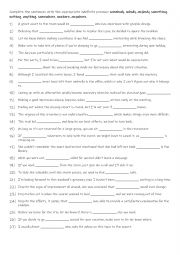
|
B1-B2 9 Indefinite pronouns
Each of the 9 indefinite pronouns is used 3 times. Students read the sentences and complete the gap-fill with the appropriate indefinite pronoun. Answers on page 2.
Level: intermediate
Age: 10-100
Type:
Downloads: 117
|
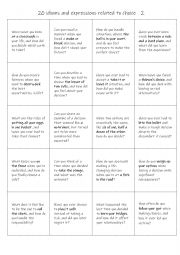
|
B1+-C1 Choice idioms and expressions 2
This is a speaking reinforcement activity to supplement the other worksheet I uploaded on 13/2/2025. Students working in pairs or small groups can either ask each other the questions or answer the question themselves.
Level: intermediate
Age: 12-100
Type:
Downloads: 122
|
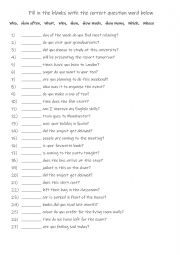
|
A1 Fill in the blanks with the correct question word below
Students familiarise themselves with the question words in bold, then read the sentences to see which interrogative is needed to complete the question. Answers on page 2.
Level: elementary
Age: 8-100
Type:
Downloads: 106
|
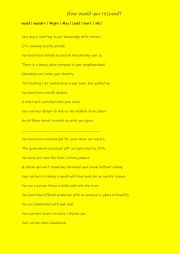
|
How would you respond?
This worksheet uses a variety of modal verbs to say how you would respond to 20 different situations. For lower level students, I normally cut the sheet in half Student A / Student B as they tend to read the question rather than developing listening skills. In class you can use phrases such as: I don�t follow you/ Again please / What does _______...
Level: intermediate
Age: 14-100
Type:
Downloads: 233
|
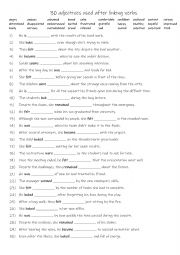
|
B1-B2 30 adjectives used after linking verbs
Learning adjectives used after linking verbs is important because they help describe or provide more information about the subject of a sentence, making communication clearer and more precise. These adjectives often express qualities, conditions, or states of being, and are essential for forming meaningful descriptions, like "She seems tired" or "T...
Level: intermediate
Age: 9-100
Type:
Downloads: 115
|
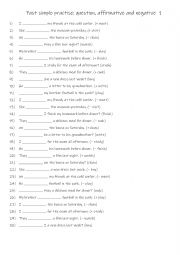
|
A1 Past simple practise with: question, affirmative and negative 1
Learning the past simple tense with questions, affirmative, and negative sentences is essential for students as it enables effective communication about past events. It provides a foundation for understanding grammar and constructing basic sentences, which is crucial for daily conversations. Mastering these forms ensures students can ask questions,...
Level: elementary
Age: 8-100
Type:
Downloads: 129
|
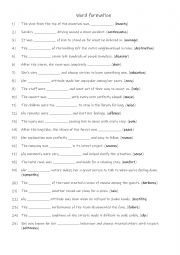
|
B1-B2 Word formation noun to adj
Students read the 25 sentences and complete the gap-fill with an adjective made from the given noun. Answers on page 2.
Level: intermediate
Age: 10-100
Type:
Downloads: 104
|
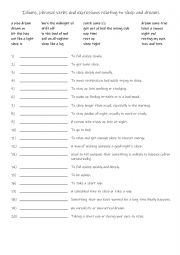
|
B2-C1 Idioms, phrasal verbs and expressions relating to sleep and dreams
First, students need to familiarise themselves with the 20 idioms and expressions and their meanings. Then they read the definitions to see which one is being described and write that word in the space provided Answers on page 2.
Level: intermediate
Age: 12-100
Type:
Downloads: 105
|
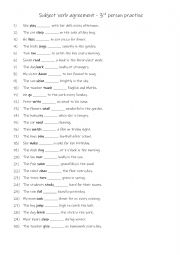
|
Subject verb agreement - 3rd person practise
This worksheet gives students valuable practise with 30 sentences, students see if they can identify if the verb is correct according to the subject as some sentences are correct. Answers on page 2
Level: elementary
Age: 10-100
Type:
Downloads: 128
|

|
B1 Adjective or Adverb practise
Practising adjectives and adverbs is important because it helps learners accurately describe people, places, things, and actions, which enhances both written and spoken communication. Students learn to distinguish between the two and use them correctly, improving sentence variety, fluency, and precision. This is crucial for learners aiming for adva...
Level: intermediate
Age: 9-100
Type:
Downloads: 112
|












